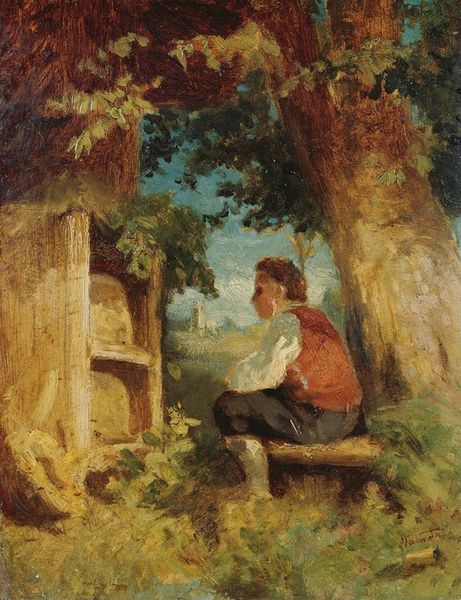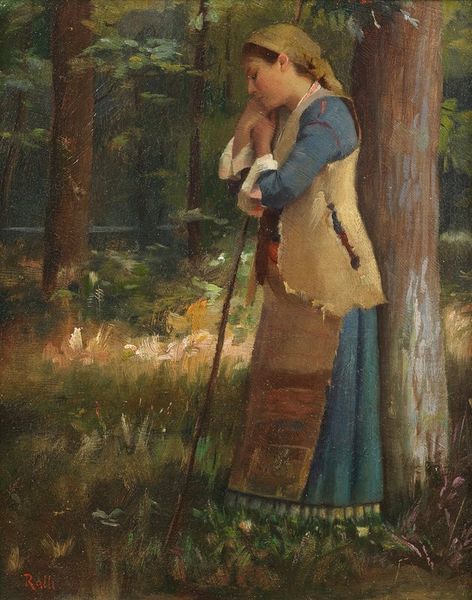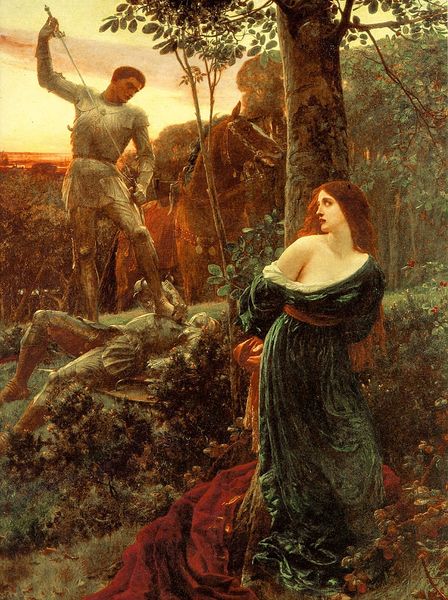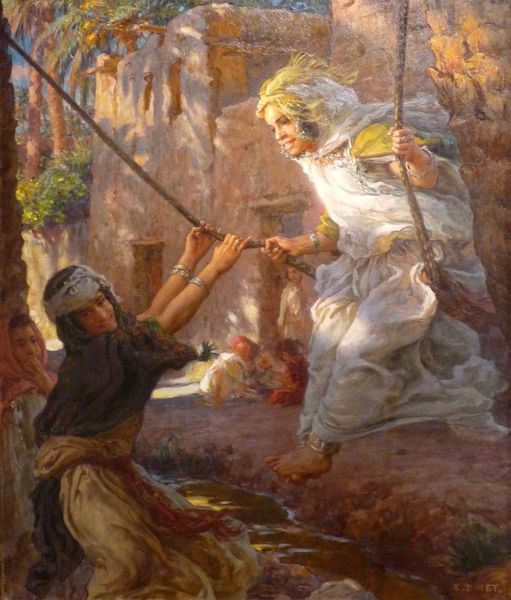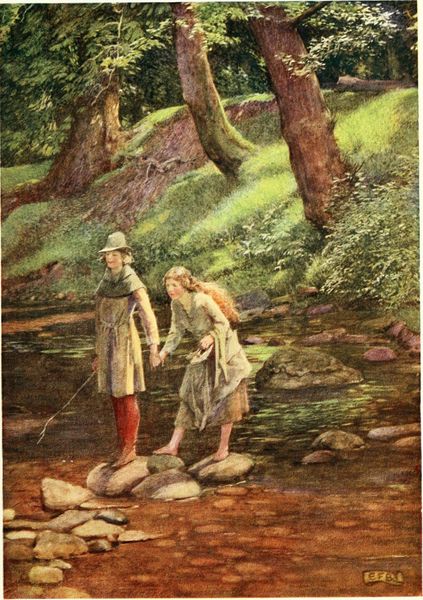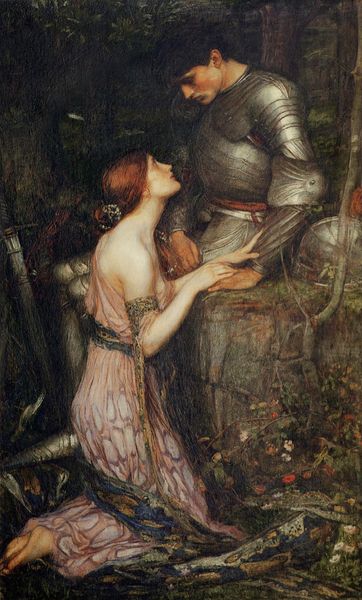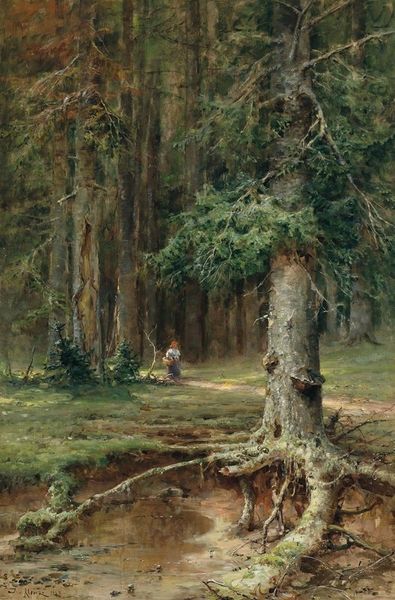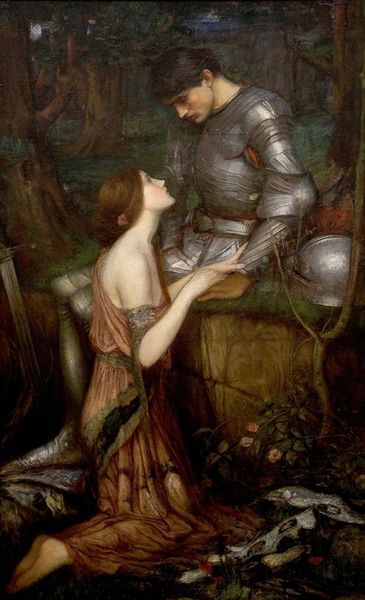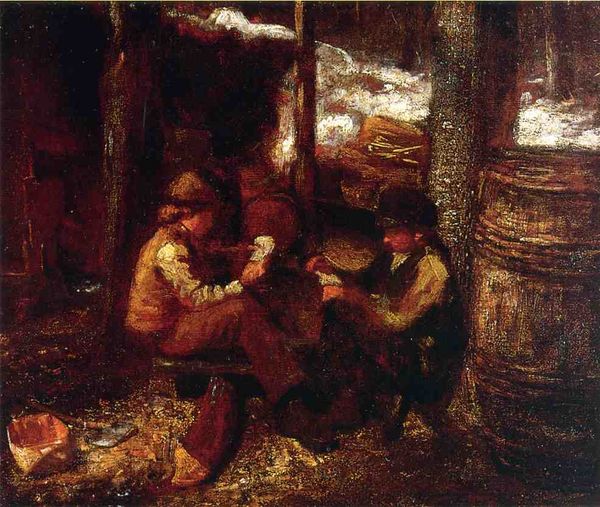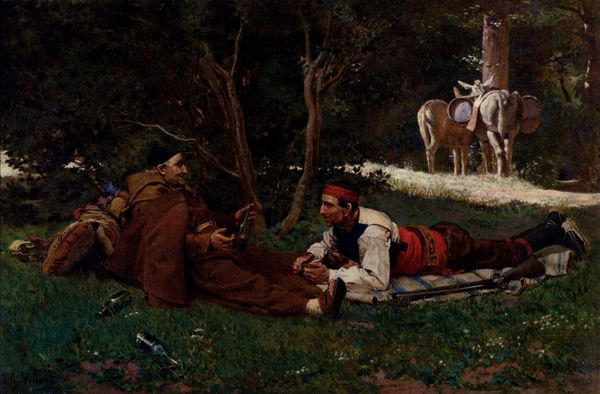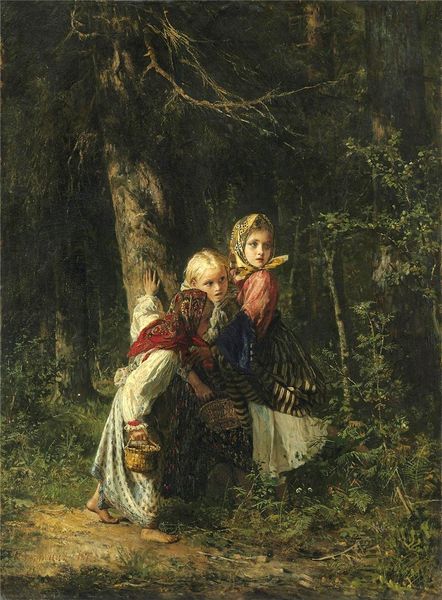
Dimensions: 152 x 200 cm
Copyright: Public domain
Curator: I'm immediately struck by how dreamlike and unreal this feels—there’s almost a theatrical quality to it. Editor: Indeed. This is John Collier’s “In the Forest of Arden,” painted in 1892. The painting is an oil on canvas and clearly evokes the Romantic movement, with its literary themes and idealization of nature. Curator: And that immediately places it in a social and historical context – late Victorian era, a fascination with narratives of escape, and definitely coded notions about the natural world. Is there something gendered about this "escape," I wonder? Both figures seem very self-contained. Editor: I agree, there’s an interesting tension. I think Collier’s craftsmanship is critical to understand. Notice the almost palpable texture of the forest floor, created with layers upon layers of paint, against the smoother handling of the figures’ garments. What labour was required to build that forest, literally? Curator: Yes, the textures are amazing. But to my eye, it is more about the subjects involved in labour--that appear quite segregated along gender lines here. There is one costumed individual doing something theatrical and another female figure whose clothing signals labour. The way they are in this sylvan, removed setting implies a definite relationship to dominant power structures back in a broader society. Editor: An interesting point. And Collier definitely demonstrates an ability to create compelling illusions. The colours feel simultaneously lush and restrained, quite harmonious to the eye. Were these pigments readily available? Where were they sourced from? Understanding that context changes how we interpret the choices in the final piece. Curator: The Romanticism feels charged though – less about nature's inherent beauty and more about constructing narratives of power. Perhaps Collier offers commentary on society. Is that romantic, escapist ideal something of an artificial construct in itself? One which only certain people benefit from? The woman seems contemplative... I see a painting less about natural materials and more about what they could have represented to its audience. Editor: Perhaps it is about those represented and also about that material itself, transformed into a thing of aesthetic contemplation. These layers reveal a story that isn't always obvious and I'm reminded of art's potential to show new narratives across time. Curator: Yes, thinking through those complex questions deepens my understanding too!
Comments
No comments
Be the first to comment and join the conversation on the ultimate creative platform.
